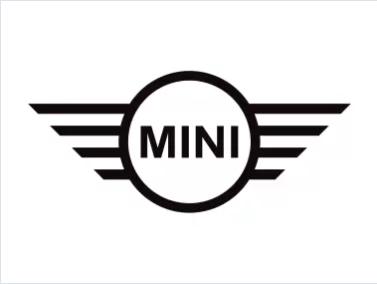20 Trailblazers Setting The Standard In Ignition Lock
Ignition Lock Repair: A Comprehensive Guide
When a vehicle stops working to start, it can be a source of disappointment for car owners. While many may right away presume it's an issue with the battery or starter, sometimes the issue lies within the ignition lock system. Comprehending ignition locks and how to repair them can save time and cash, enabling lorry owners to make educated choices when dealing with ignition issues.
What is an Ignition Lock?
An ignition lock is an essential part of a car's ignition system. It is the system that permits the motorist to start the car after placing the key. The ignition lock serves numerous functions:
- Security: Prevents unauthorized starting of the car.
- Control: Allows the driver to manage the ignition system.
- Key Recognition: Activates the ignition only with the proper key.
Depending upon the vehicle's make and design, ignition locks can differ substantially in design and functionality. They might be standard key-based systems or modern electronic ignition systems.
Signs of Ignition Lock Issues
Understanding the signs of ignition lock problems is vital for timely repairs. Here are some typical symptoms:
- Key Won't Turn: Difficulty turning the key in the ignition can indicate a problem with the lock cylinder.
- Key Is Stuck: If the key gets stuck in the ignition or the lock will not release the key, it may signify internal damage.
- No Start After Turn: If the engine does not begin after turning the key, the ignition lock or associated components may be failing.
- Steering Wheel Locking: A steering wheel that locks unexpectedly might suggest problems with the ignition lock mechanism.
Actions to Diagnose Ignition Lock Issues
Detecting ignition lock issues can appear overwhelming. However, following a methodical technique can help isolate the concern:
- Check the Battery: Ensure the battery remains in great condition. A dead or weak battery can mimic ignition lock issues.
- Check the Key: Examine the key for indications of wear or damage that might avoid it from engaging the lock.
- Check the Ignition Lock: Gently wiggle the key while turning it to see if there is any modification in resistance.
- Take A Look At the Steering Column: Check for any obstructions or damage in the guiding column that could affect the ignition lock.
It's advisable to speak with a professional mechanic if these steps do not fix the concern.
Ignition Lock Repair: DIY vs. Professional Help
Repairing an ignition lock can be a DIY task depending upon the vehicle's intricacy and the owner's mechanical abilities. However, here are some factors to think about before continuing with a repair:
When to Consider DIY Repair
- Basic Mechanical Skills: Individuals with experience in automobile repair may effectively perform simple repairs.
- Availability of Tools: Access to tools like screwdrivers, wrenches, and possibly a soldering iron may make DIY repairs possible.
- Cost: DIY repairs can minimize labor expenses however may require buying replacement parts.
When to Seek Professional Help
- Complex Systems: Modern automobiles typically have actually incorporated electronic systems that require specialized understanding and diagnostic equipment.
- Time Constraints: Professionals can complete repairs quicker, guaranteeing the lorry is back on the road without substantial downtime.
- Assurance of Work: Professionals normally guarantee their repairs, offering assurance.
A Step-by-Step Guide to Repairing an Ignition Lock
For those thinking about a DIY technique, here is a streamlined guide to fixing an ignition lock:
Tools Required
- Flathead screwdriver
- Phillips screwdriver
- Pliers
- Replacement ignition lock cylinder (if needed)
- Lubricant (such as graphite or WD-40)
Repair Steps
- Detach the Battery: Safety first! Constantly disconnect the vehicle's battery before starting any repair work.
- Remove the Steering Column Cover: Use the suitable screwdriver to remove screws and separate the cover thoroughly.
- Access the Ignition Lock Cylinder: Locate the ignition lock assembly and use a paper clip or pin to launch it from its real estate.
- Examine and Clean: Examine the ignition lock cylinder for wear or particles. Continued with lube and a soft fabric.
- Replace the Cylinder if Necessary: If the cylinder is damaged, eliminate it and replace it with a new one.
- Reassemble: Carefully reassemble the steering column cover and reconnect the battery.
Table: Comparison of Ignition Lock Repair Methods
Element
DIY Repair
Expert Repair
Cost
Lower (parts just)
Higher (labor & & parts)
Time
Longer (depends upon ability)
Faster (experience and tools)
Skill Level
Needs basic skills
Know-how needed
Guarantee
None
Often consists of a service warranty
Tools
Fundamental tools
Specialized devices
Frequently Asked Questions About Ignition Lock Repair
1. How much does it cost to repair an ignition lock?The cost differs depending upon the vehicle make, diagnosis, and whether you choose a DIY approach or expert assistance. Do it yourself repairs can cost just ₤ 20— ₤ 100 for parts, while expert repairs can range from ₤ 100 to ₤ 300 or more. 2. Can I drive my lorry if the ignition lock is not working?It's not
advisable to drive a vehicle with ignition lock issues. Doing so
might lead to further damage or jeopardize your security. 3. Is it possible to replace just the ignition lock cylinder?Yes, in most cases,
**you can replace just the ignition lock cylinder without requiring to replace the whole ignition system. 4. How can I avoid future ignition lock problems?Regular upkeep, using the right key, and lubing the
ignition lock regularly can assist prevent issues. In conclusion, understanding ignition lock repair can empower lorry owners to address this typical concern efficiently. Whether choosing a DIY approach or looking for expert assistance, taking timely action can spare vehicle drivers from unnecessary inconvenience and expenses.  **
**